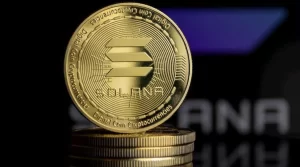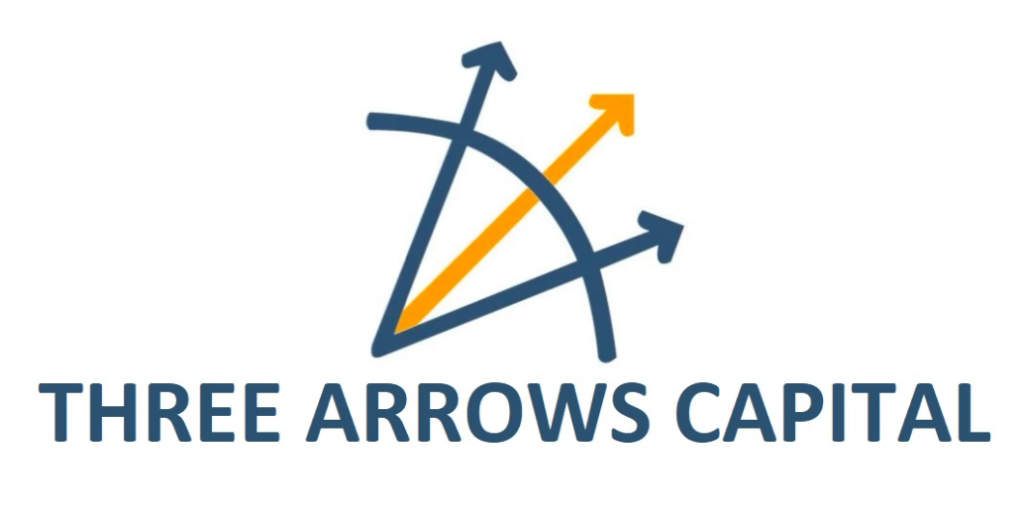The bankruptcy ordeal of Singapore-based cryptocurrency hedge fund, Three Arrows Capital (3AC), is intensifying as a court in the British Virgin Islands has imposed a freeze on more than a billion dollars’ worth of assets belonging to its co-founders, Su Zhu and Kyle Davies.
Bloomberg reported on December 21 that the court has prohibited Zhu and Davies from transferring or selling assets valued at up to $1.14 billion.
This restriction has also affected assets owned by Davies’ wife, Kelly Chen. According to the liquidator of 3AC, Teneo, the hedge fund’s creditors are owed an estimated $3.3 billion following its collapse in 2022.
Teneo has sought a worldwide freezing order, alleging that the founders should be held accountable for causing “3AC’s position to deteriorate by an amount equivalent to the value of the freezing orders sought.”
Additionally, the liquidator noted that the 3AC founders are subject to a domestic freezing order from the Singapore Court. Teneo has not responded to Cointelegraph’s request for comment at this time.
READ MORE: Solana Memecoin Trader Turns $226,000 into $1.6 Million in Just Five Days
Founded in 2012, 3AC was once among the largest cryptocurrency hedge funds globally.
However, it faced financial difficulties during the 2022 crypto bear market when it failed to meet margin calls from its lenders, ultimately leading to its bankruptcy.
In September 2023, Su Zhu was arrested in Singapore as he reportedly attempted to flee the country after a local court sentenced him to four months of imprisonment.
Meanwhile, Kyle Davies, who also received an imprisonment committal order, is reportedly still at large.
Furthermore, both Zhu and Davies have been banned from engaging in regulated activities in Singapore for a duration of nine years by the local central bank.
The ongoing legal proceedings and asset freezes underscore the significant challenges faced by prominent cryptocurrency firms as they navigate the volatile crypto market and regulatory environments.
The cryptocurrency community will undoubtedly continue to monitor this case closely as it unfolds.
Jeremy Hunt, the Chancellor of the Exchequer for the United Kingdom, has expressed his willingness to engage in discussions regarding digital assets within the country.
During a parliamentary session on December 19th, Member of Parliament Lisa Cameron, a proponent of cryptocurrencies, inquired if the finance minister was open to discussions regarding licensed crypto firms’ access to banking services.
In response, Hunt assured that Economic Secretary Bim Afolami would be more than willing to meet with the Crypto and Digital Assets All-Party Parliamentary Group to address these concerns.
London, in particular, has emerged as a global hub for cryptocurrencies.
However, to ensure the responsible growth of this market, regulatory measures have become imperative.
Hunt emphasized that the UK has taken steps in this direction by introducing regulations for stablecoins and the promotion of crypto services. These measures aim to strike a balance between fostering innovation and safeguarding financial stability.
READ MORE: Tether Takes Proactive Measures to Combat Illicit Use, Aids Law Enforcement
Afolami assumed the role of Economic Secretary in November, giving him considerable influence over policies related to digital assets and central bank digital currencies in the UK.
Notably, prior to his appointment, he engaged with representatives from Coinbase in 2022 to discuss the regulatory landscape for digital assets.
The UK government has been proactive in advancing legislation to regulate stablecoins.
These regulations grant authorities the power to intervene in cases of illicit crypto transactions and establish a digital securities sandbox for crypto firms.
Prime Minister Rishi Sunak has also unveiled plans to position the UK as a tech hub for artificial intelligence.
To support this initiative, substantial investments of around $130 million have been allocated to the development of computer chips.
In sum, the UK, and London, in particular, have embraced the crypto industry but are also committed to responsible regulation.
With Economic Secretary Bim Afolami ready to engage with the crypto community and the government’s proactive stance on regulation, the UK is poised to strike a balance that fosters innovation while ensuring market integrity and financial security.
Bitcoin bull Michael Saylor believes that the potential approval of a spot Bitcoin exchange-traded fund (ETF) could mark the most significant development on Wall Street since the early 1990s.
In an interview with Bloomberg on December 19, Saylor expressed his enthusiasm for the prospect of a spot Bitcoin ETF, emphasizing its potential impact on the financial world.
Saylor stated, “It’s not unreasonable to suggest that this may be the biggest development on Wall Street in 30 years.
“The last thing that was this consequential was the creation of the S&P index and the ability to invest in all 500 S&P companies via one trade at the same time.”
According to Saylor, a spot Bitcoin ETF would serve as a gateway for both retail and institutional investors who have previously struggled to access a reliable channel for Bitcoin investments.
He anticipates that this ETF could trigger a significant surge in demand, followed by a “supply shock” in April when the Bitcoin halving event occurs.
“I don’t think we’ve ever seen a 2 to 10x increase in demand combined with a halving in supply in a scarce, desirable asset that people want to hold for a long period of time,” Saylor explained. As a result, he predicts that 2024 will witness a major bull run for the cryptocurrency market.
Saylor also confirmed that his company, MicroStrategy, would continue its Bitcoin investment strategy.
READ MORE: FTX Bankruptcy Drains $53,000 per Hour on Legal Fees and Advisors, Totaling $350 Million
He emphasized their commitment to finding ways to acquire more Bitcoin per share for shareholders, whether through debt, equity, or cash flows from the business.
MicroStrategy has been a pioneer in providing traditional investors with exposure to Bitcoin’s price since it began acquiring Bitcoin in 2020.
They offer leverage without charging fees, making it an attractive option for long-term Bitcoin investors.
At the time of publication, MicroStrategy owns 174,530 BTC with an average purchase price of $30,252, which is now valued at approximately $7.3 billion. This represents a $2.1 billion gain on their Bitcoin investment.
Saylor’s journey with Bitcoin has evolved significantly. A decade ago, he famously predicted the downfall of Bitcoin, a prediction that has not aged well.
However, his change of heart around 2020 led to MicroStrategy’s substantial Bitcoin investments, earning him recognition as one of the cryptocurrency’s most vocal proponents.
Bitcoin analyst Dylan LeClair praised Saylor for his ability to adapt, stating, “The measure of intelligence is the ability to change.”
In retrospect, Bitcoin’s price was just $677 on December 19, 2013, when Saylor made his initial prediction.
By the time MicroStrategy entered the market in August 2020, Bitcoin had surged to around $11,650, marking an 18-fold increase from his earlier prediction.
In conclusion, Michael Saylor’s endorsement of a potential spot Bitcoin ETF highlights the growing mainstream acceptance of cryptocurrencies and their significance in the financial world, showcasing the dynamic nature of the digital asset space.
Blockchain security company CertiK has issued a critical security alert to all iPhone users of OKX, urging them to promptly update their iOS application.
The warning comes following the discovery of a significant security vulnerability earlier this month.
In a December 19 announcement shared on X (formerly known as Twitter), CertiK alerted OKX wallet users to the urgency of updating their iOS apps to the latest version.
The security firm emphasized the necessity of this action to safeguard users from potential exposure to a security flaw.
CertiK disclosed that earlier in the month, they had identified and reported a critical Remote Code Execution (RCE) vulnerability within the OKX iOS App.
This vulnerability had the potential to compromise sensitive data and crypto assets, posing a severe threat to users.
Taking swift action, OKX responded to the security issue by implementing a “relevant upgrade” on December 19.
They encouraged all users to transition to the latest iOS version, specifically version 6.45.0.
CertiK subsequently confirmed that the security concern had been successfully addressed and resolved by the exchange.
READ MORE: FTX Creditors Seek Retroactive Valuation for Customer Claims Amidst Soaring Crypto Prices
A Remote Code Execution (RCE) vulnerability is a serious threat, as it allows malicious actors to execute code on an organization’s computers or network.
This type of breach can lead to the theft of funds or data breaches, posing significant risks to users and their assets.
It’s important to note that OKX has faced security challenges in the recent past.
On December 13, the OKX decentralized exchange, known as OKX DEX, experienced a $2.7 million hack.
This breach occurred due to the alleged leakage of the private key of the proxy admin owner.
Such incidents emphasize the need for robust security measures within the cryptocurrency industry.
Despite these security concerns, OKX has maintained a strong reputation in the cryptocurrency exchange sector.
It currently holds the 10th position on CoinGecko’s “trust score” leaderboard for trading platforms, boasting a score of 9/10.
Notably, OKX expanded its services to Brazil in late November, further extending its global reach in the world of crypto trading and wallet services.
In conclusion, the swift response of CertiK and OKX in addressing the RCE vulnerability highlights the importance of proactive security measures within the cryptocurrency industry, ultimately enhancing the safety of users and their assets.
The team responsible for the popular dog-themed meme cryptocurrency, Shiba Inu, has taken a significant step towards enhancing its online presence by applying for a ” .shib” domain name within the internet’s domain name system (DNS).
In a tweet shared on December 19th, D3, an internet domain company specializing in next-generation domains that facilitate interoperability between Web2 and Web3, disclosed its collaboration with @ShibToken to pursue and secure the “.shib” Top-Level Domain (TLD).
Current Web3 domain names, such as “.crypto” and “.eth,” face compatibility challenges with widely used internet tools like web browsers and email due to their lack of integration with the DNS.
In contrast, Web2 domains like “.com” and “.net” function seamlessly within the DNS but are not inherently compatible with Web3 tools like cryptocurrency wallets and digital identity solutions.
If the application is successful, holders of Shiba Inu’s meme cryptocurrency would gain the ability to establish email addresses featuring the “.shib” extension, ensuring compatibility with standard email applications, as outlined by D3.
READ MORE: Tether Takes Proactive Measures to Combat Illicit Use, Aids Law Enforcement
The next step for D3 involves submitting an application to the Internet Corporation for Assigned Names and Numbers (ICANN), a non-profit organization based in the United States responsible for establishing and enforcing policies governing the internet’s identifiers.
Additionally, D3 plans to introduce “name tokens” designed for SHIB users, simplifying the process of sending digital assets across various blockchains by eliminating the need for lengthy alphanumeric wallet addresses.
Interestingly, the news of this development did not significantly impact the price of SHIB, with the cryptocurrency experiencing only a minor decrease of less than 1% following D3’s announcement, according to CoinGecko data.
In a separate update, Shiba Inu unveiled its new layer-2 blockchain, known as the Shibarium network, which boasted 1 million users as of September.
Although the blockchain remains in a private mode, the Shiba Inu team has expressed its intention to make it publicly accessible in the coming months, potentially ushering in new possibilities for the Shiba Inu ecosystem.
In a recent development, a U.S. appeals court has successfully completed the legal proceedings required to officially seize 69,370 Bitcoins and various other cryptocurrencies linked to the now-defunct dark web marketplace, Silk Road.
In a court filing dated December 20th, the U.S. District Court of Appeals for the Ninth Circuit has affirmed the transfer of these seized Bitcoins into federal custody.
This decision builds upon a previous ruling that recognized the government’s rightful claim to the digital assets connected to Silk Road’s illegal activities.
Aside from Bitcoin, the confiscated cryptocurrency holdings also encompassed Bitcoin Gold (BTG), Bitcoin SV (BSV), and Bitcoin Cash (BCH).
This marks a significant development in the ongoing legal battle surrounding Silk Road’s ill-gotten digital wealth.
The legal saga began in earnest when the U.S. court issued its initial judgment on Silk Road’s Bitcoin holdings back in August.
This followed the U.S. Justice Department’s actions in 2020 when it seized the cryptocurrency and sought its official forfeiture.
At the time, the total value of the seized Bitcoin exceeded an astonishing $1 billion.
READ MORE: FTX Bankruptcy Drains $53,000 per Hour on Legal Fees and Advisors, Totaling $350 Million
The initial complaint filed in 2020 detailed how the U.S. government had gained control of the cryptocurrency, which was initially surrendered by an individual known as “Individual X.”
This individual had successfully hacked into Silk Road and taken control of its financial assets.
Previous reports from Cointelegraph have identified the Silk Road hacker as James Zhong, who is now 32 years old and was sentenced to a year in federal prison in April.
On July 12th, a cryptocurrency wallet linked to the United States Department of Justice (DOJ) carried out several transactions, moving approximately 9,825.25 Bitcoins valued at around $299 million, all tied to Silk Road.
The crypto community closely monitored these transactions, as speculations swirled about the potential impact of any substantial sale by the U.S. government on Bitcoin’s price.
Silk Road, established and operated by Ross Ulbricht from 2011 to 2013, was notorious for facilitating the sale of illegal drugs and weapons.
Following Ulbricht’s arrest in late 2013, the FBI shut down the platform.
In a surprising turn of events in 2022, Ulbricht agreed to use $3 billion worth of stolen Bitcoins to settle his debt to the U.S. government and also waived his claim to the 69,470 Bitcoins in question.
The approval of a Bitcoin exchange-traded fund (ETF) by January 10, 2024, is now almost certain, according to analysts at K33 Research.
In a report released on December 19, K33’s Head of Research, Anders Helseth, and Senior Analyst, Vetle Lunde, emphasized that recent developments surrounding ETFs, including filings by BlackRock and ARK Invest, adopting a cash-creation setup for their funds, have greatly increased the likelihood of approval in January.
The report also highlighted the robust performance of Bitcoin over the past week. Analysts observed that the trading volumes for spot Bitcoin had surged significantly compared to previous months.
This increase in volume was attributed to the strong rally of Bitcoin, which attracted new buyers and motivated profit-taking by sellers, resulting in price consolidation with elevated trading activity.
Despite the surge in spot Bitcoin trading, the report noted that open interest in BTC perpetual contracts had reached new yearly lows, indicating a lack of retail speculation.
In contrast, institutional investors on the Chicago Mercantile Exchange (CME) displayed an increasing appetite for Bitcoin-related risk, with CME open interest growing by 3,100 BTC in the past week.
However, analysts anticipated that this trend might change following the approval of spot ETFs.
READ MORE: Tether Takes Proactive Measures to Combat Illicit Use, Aids Law Enforcement
Once spot ETFs receive approval, the analysts predicted a “significant rotation” out of futures-based ETFs on the CME.
Additionally, active traders were likely to realize profits on their current long positions, collectively reducing the dominance of CME in the Bitcoin derivatives market.
The report also drew attention to the notable performance of certain altcoins, such as Solana Ordinals (ORDI) and Bonk (BONK), which experienced substantial gains in the last 20 days, rising by 22%, 114%, and 338%, respectively.
While such altcoin enthusiasm is often considered a sign of a market top, the analysts explained that this could be advantageous for Bitcoin.
The analysts suggested that the surge in altcoin enthusiasm helps release speculative pressure from Bitcoin, potentially reducing the risk of liquidation cascades.
Altcoins, in this context, serve as a positive pressure valve for those seeking excitement in the market while allowing for healthier leverage conditions in Bitcoin.
Consequently, Bitcoin may benefit from the diversification of speculative interest into altcoins.
The surge in demand for creating inscriptions on non-Bitcoin-based blockchain networks has propelled several prominent networks, such as Arbitrum and BNB Chain, to achieve unprecedented levels of throughput.
According to data analysis by the pseudonymous researcher known as “hildobby,” who works with the crypto venture fund Dragonfly, various blockchain networks have experienced their highest daily peak transactions per second (TPS) in December.
Among these networks are Goerli, zkSync, Arbitrum, Gnosis, and the BNB Chain, with inscriptions accounting for a substantial portion of their transaction activity, ranging from 83% to 97%.
Furthermore, Fantom, Celo, Avalanche, and Polygon also set new daily TPS records in November.
The surge in inscription activity has not only impacted daily TPS but also hourly records.
Optimism reached an hourly TPS record of 87,960 on December 19, while Avalanche achieved an hourly TPS record of 289,285 on December 18, as reported by an analyst’s Dune Analytics dashboard.
This inscription frenzy has caused a significant uptick in transaction counts across leading blockchain networks over the past two years. Additionally, the amount spent on gas fees for minting new inscriptions has reached all-time highs.
READ MORE: NFT Trader Hit by Security Breach, Millions in NFTs Stolen by Hackers
Similar to the concept of Bitcoin Oracles, users have discovered that they can create inscriptions using transaction call data on Ethereum Virtual Machine (EVM)-based chains.
This capability enables them to mint various items, from meme coins to social media profile pictures, increasing the demand for blockchain space.
Ava Labs co-founder Kevin Sekniqi highlighted that on December 19, the Avalanche C-Chain (contract chain) reached a remarkable 977 TPS, with many EVM chains experiencing unprecedented loads due to inscriptions.
He emphasized that the inscription trend has served as a rigorous stress test for existing blockchain infrastructure, underscoring the necessity for subnets to handle the heightened demand.
However, the inscription gold rush has not been without challenges.
It has led to full and partial network outages on several platforms, including Arbitrum, zkSync, Cronos, and Celestia, as reported by Cointelegraph on December 19.
These issues reflect the need for robust and scalable solutions to accommodate the growing interest in inscription activities across blockchain ecosystems.
Several prominent applicants seeking approval for a Bitcoin exchange-traded fund (ETF) in the United States are revising their applications to conform to the cash redemption model mandated by securities regulators.
Investment management giant BlackRock and ARK Invest, led by Cathie Wood, have both made updates to their S-1 registration statements for a proposed spot Bitcoin ETF, which have been submitted to the U.S. Securities and Exchange Commission (SEC).
These amendments, filed on December 18, primarily pertain to the creation and redemption process for proposed spot Bitcoin ETFs.
Both BlackRock and ARK have chosen to embrace the cash redemption system, as opposed to in-kind redemptions, which involve non-monetary assets like Bitcoin.
ARK’s registration statement hinted that its ARK 21Shares Bitcoin ETF would exclusively facilitate cash creations and redemptions.
The document did, however, mention the possibility of authorized participants being able to engage in in-kind transactions for creating and redeeming shares, pending regulatory approval.
Similarly, BlackRock filed a comparable update, emphasizing that in-kind transactions could occur, but only if approved by regulators.
READ MORE: Bitcoin Transaction Fees Surge, Sparking Debate on Future Solutions
These transactions would still involve cash exchanges, but may also involve Bitcoin if approved by the Nasdaq Stock Market.
Eric Balchunas, an ETF analyst at Bloomberg, suggested that ARK and its ETF partner, 21Shares, initially sought alternatives to cash creations and had creative solutions for in-kind redemptions.
However, their shift to cash redemption indicates the SEC’s inflexibility on this matter, potentially indicating a resolution to the ongoing debate and a favorable outlook for approval in January.
The SEC’s insistence on a “cash-only” requirement implies that authorized participants will only be able to acquire additional ETF shares by providing the corresponding amount of cash, as noted by investor and consultant Vance Harwood.
Harwood further explained that the SEC’s stance is understandable, as it ensures transparency regarding the source of the ETF’s underlying Bitcoin holdings, which are expected to be purchased from reputable exchanges.
WisdomTree, a global ETF provider, also submitted an S-1 amendment for its spot Bitcoin ETF, the WisdomTree Bitcoin ETF, on December 18.
Notably, WisdomTree has opted to retain the option of in-kind creation and redemption.
In summary, several key players in the race for a U.S. Bitcoin ETF are adjusting their applications to comply with the SEC’s cash redemption model, indicating a potential resolution to regulatory hurdles and increasing the likelihood of approval in the near future.
On December 19, Bitcoin made a triumphant return, surging above the $43,000 mark, driven by fresh developments surrounding the prospective launch of the United States’ inaugural spot Bitcoin exchange-traded fund (ETF).
Data sourced from Cointelegraph Markets Pro and TradingView illustrated a remarkable recovery in Bitcoin’s price, propelling it to local highs of $43,456 following the daily close.
After an initially uncertain start to the week, BTC/USD rapidly gained momentum, with the December 18th candle closing more than 5% above the day’s lowest point.
Subsequently, news emerged that asset management giant BlackRock, a contender seeking approval for the first-ever U.S. spot Bitcoin ETF, had revised its redemption policy to include Bitcoin as an option.
According to the latest version of BlackRock’s S1 filing with the U.S. Securities and Exchange Commission (SEC), the redemption of a shareholder’s shares for the underlying Bitcoin generally would not trigger a taxable event.
The document also outlined new regulations regarding the exchange of baskets of shares for cash instead of Bitcoin, with the latter contingent upon regulatory approval.
The SEC is scheduled to commence its final deliberations on spot ETFs in early January 2024, making the upcoming month a critical juncture for Bitcoin enthusiasts.
READ MORE: Grayscale Assesses Tax Implications for Spot Bitcoin ETFs Amid Regulatory Scrutiny
Multiple Bitcoin price predictions are contingent on the successful approval of the ETF, which is now perceived as highly probable after years of delays and rejections.
Bob Loukas, a trader and investor, expressed confidence in the approval process, remarking that “the level of SEC engagement and back-and-forth on the Bitcoin ETF tells us this is a 99.9% done deal.”
Meanwhile, the SEC delayed its final decision on several Ether ETFs until May.
In the interim, Bitcoin faces significant events, including the annual candle close and the release of various macroeconomic data, potentially contributing to holiday season volatility.
Traders are closely monitoring price levels, with the possibility of Bitcoin dipping below $40,000 still looming.
Crypto Ed, the founder of trading group CryptoTA, suggested this scenario might unfold before a final upward surge, potentially driving BTC/USD to $50,000 by the end of 2023.
Additionally, popular trader and analyst Matthew Hyland expressed optimism about further upside, citing a bullish divergence in Bitcoin’s relative strength index (RSI) versus its price on daily timeframes.
At the time of writing, the daily RSI stood at 60.45, having cooled off from the elevated levels when Bitcoin reached its recent 19-month high above $44,000.












